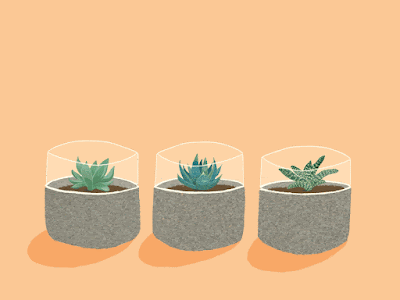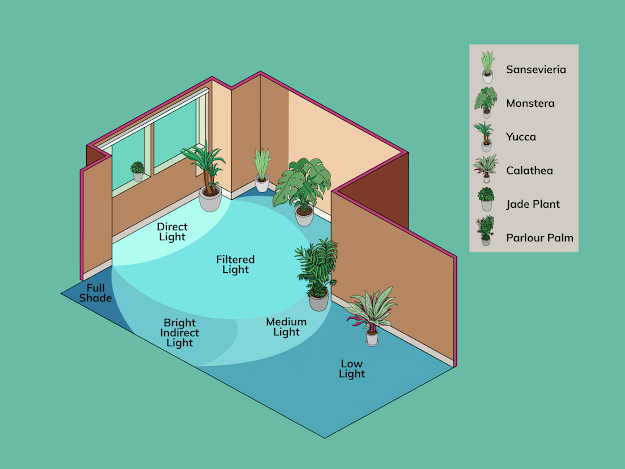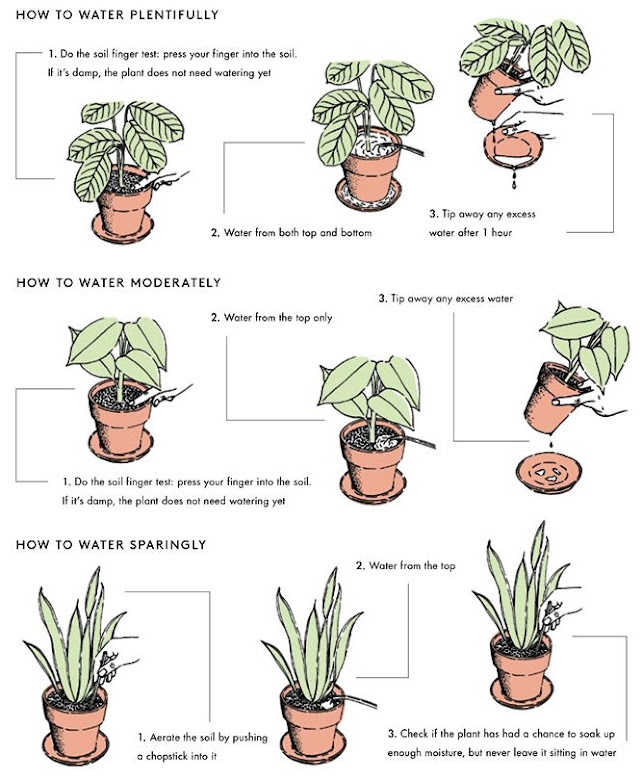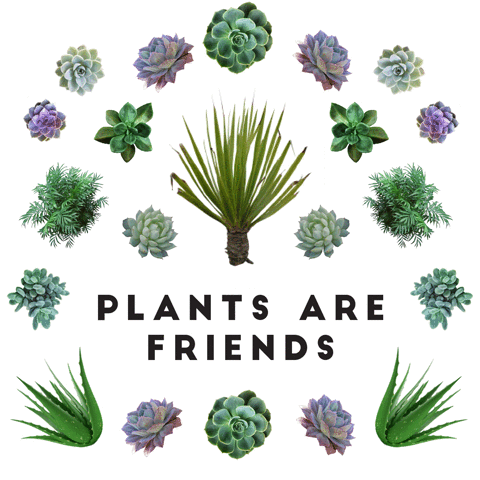Indoor Plants that Enhance Built Environments
"A beautiful plant is like having a friend around the house." - Beth Ditto
WE ARE THE
INDOOR GENERATION
In the current lifestyle, Health is a most discussed topic
nowadays. Year after year we increase our expenditure on fitness clubs
and yoga, on exercise trackers and equipment, yet we spend more time indoors than ever
before (almost 80-90%). We are becoming a truly indoor generation. Hence improving
the indoor environment has become essential than ever before.
WHAT ARE
INDOOR PLANTS
Plants that require a low amount of light and water to
thrive are typically known as indoor plants. Indoor
plants form an essential component of every Environment Concious Interior Designs.There are multiple benefits of having indoor plants on the occupant’s
wellbeing as well as they help to brighten up the indoor environment.
INDOOR PLANT
BENEFITS
Indoor plants when planted & planned well can ameliorate
the indoor environment.
It has been found often that the Indoor plants do have
some positive effects on building occupant’s health, wellbeing &
productivity. Viewing the green plants daily in balcony/table tops/
room corners, observing the growth/change in these plants (size, foliage
patterns, colors of flowers, fragrance etc.) & gardening have a therapeutic
effect on the occupant’s health. Taking care of plants is seen to have reduced
the feelings of loneliness & depression in people; it provides sense
of purpose & refuge from constant distractions caused by screens
& notifications.

People become less nervous and anxious when they were in an environment which includes indoor plants or a view of nature.
Talking to the plants – can help soothe the melancholy.
The personal Plant space in indoors
adds to happiness factor & acts as a mood enhancer by seeing our plants
bloom & thrive.
The potted plants & their care (by being the
plant parent) imbibe qualities of patience, love & care for other living beings
in us. They make us more compassionate and empathic towards
others.
Consuming freshly grown vegetables (micro greens) at home, Plant styling
& Plant photo corner (Instagram friendly spaces) are
some of the latest trends w.r.t Indoor plants.
Experiences of Pleasure, perfumes, peace, piety & glimpses of paradise are associated with the indoor plants along with many health imperatives.
INDOOR PLANTS
TYPES
Indoor plants play variety of roles such as they act as dust-catchers at home, could be natural healers, provide natural scents, act as natural humidifiers, act as
mosquito repellents, microgreens could be used for salads, soups & curries, can add visual
quality to the home interiors...etc.
Tulsi (Holy
Basil) – Plant with medicinal benefits which boosts
immunity, improves digestion, acts as an excellent mosquito repellent &
with its sweet fragrance has soothing impact on mind. This plant with its
multiple benefits could be a best choice for home.
Money Plant - A hardy plant with heart-shaped leaves, money plant is a common indoor plant. This low maintenance plant is a homeowner's favorite for a good reason that, it releases oxygen at night and is excellent for filtering the air.
Areca Palm – This plant filters the air & can also add moisture to it and is considered to be helpful for people who suffer from sinus issues. This plant prefers partial shade to grow well, making it an ideal indoor plant.Snake plant – This plant is tolerant to indirect light/dim light & helps to remove the toxins from the air. It helps in improving oxygen. Living spaces & kitchens are suitable location for the placement.Monstera deliciosa (Swiss cheese plant) – The lush green and glossy leaves adds a visual appeal to the space. It needs support, hence plant in a large pot.
Rubber plant (Ficus elastica ‘Robusta’) – These are easy-care houseplants; they also improve indoor air quality. It required medium bright light (indirect sunlight) & can tolerate low light, Mist frequently to maintain high humidity.Hedera (Ivy) – This plant reduces mold and improves air quality. Prune to keep the shape and control of its vine length.
ADORNING
INDOOR SPACES WITH INDOOR PLANTS
Arrange plants
in Odd Numbers - Group plants in an odd number. Using an even
number can look symmetrical, making the arrangement look more formal. Odd
numbers give a more natural & casual
look.
Include Plants with Colorful Leaves – Plants are blessed with variety of colors, wisely choose the color of the plants. For a cohesive unified look, put plants together that have leaves of the same color. For more diversified contrast look, go for plants with foliage of different colors.
Use Decorative
Pots - Choosing pots can be based on personal preference or as per the look of an interior design theme. You can use pots with similar finishes and colors to make the arrangement look
like a set. Or you can combine all your favorite pots of different materials
and colors for an eclectic arty finish.
Eligibility Requirements for B.Voc (Interior Design) :

(For any details contact us)
Website: www.tsapmumbai.in
E-mail: tsap@thakureducation.org
Contact: 022-67308001/02
Whatsapp: +91-9321656571
INDOOR PLANT
CARE
It is
advisable to use Low-maintenance plants - When
choosing indoor plants, select varieties that will withstand indoor growing conditions such as low light intensity and dry
air. To
be satisfactory, indoor plants must do more than merely survive under indoor
conditions. They must maintain an attractive appearance with a minimum of care.
Soil is very important for houseplants -
SIMPLE TIPS TO
DIAGNOSE INDOOR PLANT PROBLEMS
Brown tips or
burned margins to
leaves may mean too much fertilizer, or you’ve let the plant roots dry out,
or you’ve let the plant become burned by sun or dry winds.
Yellowing and
dropping of leaves may indicate gas fumes, overwatering, poor
drainage or poor soil aeration. Small
leaves suggest tight or heavy soil mixture, lack of fertilizer or not
enough moisture.
Yellowing,
wilting, or soft-weak growth may mean too much heat or root
injury.
White, cottony
masses on leaves or stems may be mealy bugs or cottony
cushion scale. A soap bath will help. Brown spots or streaks on the leaves may
mean a bacterial or fungus disease.
Since house conditions are usually less than ideal, it’s advisable to change plants once in a while. Don’t expect a plant to live forever inside.
Let’s strive towards creating more & more Environment Conscious Designs through introduction of Plants indoors… thereby enhancing the Built environment & help promote healthy living everyday.
Happy Planting!!!
Ar.Sujit Vasant Jadhav
(M.Arch Landscape)





































Very nice and informative article sujit
ReplyDeleteVery nicely narrated and very informative
DeleteExtremely well framed...
ReplyDeleteAmazing read too informative
ReplyDeleteNicely made. Concise content and well presented. Great !
ReplyDeleteBeautiful article sir...the importance of indoor plants, the interaction with plants and the emotional connection with it.. how to compose the plants...and taking care of them with respect to some measures.....
ReplyDeleteEverything is beautifully mentioned..indeed a very informative article...and a great awareness as well for this genereation
It just felt good to scroll and read through this blog. A nice and light read sir !
ReplyDeleteNice article....very informative...worth implementating...keep up the good work😊🌻
ReplyDeleteThe pictures made the blog even more interesting and informative...
ReplyDeleteGreat article Sujit. Nice to see your writing. Keep moving, best wishes.
ReplyDeleteVery nice and informative article Sir!
ReplyDeleteAmazing article Sir, very informative and beautiful connection with plants🙌🙌
ReplyDeleteit was very informative sir .
ReplyDeleteamazing content and presentation!!!!!!!
ReplyDeleteBeautifully presented sir...Great work!!
ReplyDeleteThis comment has been removed by the author.
ReplyDeleteGreat article sir!
ReplyDeleteGreat read for planting indoor spaces!!
ReplyDeleteInformative enough to convince anybody to incorporate the same at their homes!
ReplyDeleteVery much informative article it will really us to in our day to day and for future projects 😊
ReplyDeleteLoved the presentation and it is very helpful information which can be used as a guide for placement of the indoor plants in interiors.
ReplyDeleteVery informative
ReplyDeleteGreat presentation sir..!!
Very informative!Now that we all are a part of 'indoor generation' having indoor plants would be so beneficial and helpful!Thanks for the perspective!Also all the graphics are just phenomenal,which makes it even more interesting to read further!Loved the blog!
ReplyDeleteAwesome article, very crisp and insightful, feeling inspired to connect with Nature and augment the Indoor Environment.
ReplyDeleteExtremely informative blog containing all the important details of indoor plants, their maintenance and also psychological effects of such practices on humans.
ReplyDeleteVery well written and composed, giving each reader valuable takeaways and technically accurate knowledge!
Very informative!!
ReplyDeleteGreat content sir!
ReplyDeleteThis sums up pretty much everything that we need to improve our indoor environment! It indeed is a very informative blog sir! Thank you for such amazing information!
ReplyDeleteGreat article sir ! Very informative :)
ReplyDeleteGreat article! Wholly informative and convincing. Plants are indeed mans unspoken best friends.
ReplyDeleteAmazing read.
ReplyDeleteExtremely informative.
Brings a lot of happiness in a time like now.
Especially about all the ways we can be happy as well as give a little back and protect the environment.
The psychological effect on us while incorporating plants and the daily nurturing and caring habits was portrayed very well.
Other than the amazing writing, the graphics too grasped my attention and as a whole was a really interesting blog.
Hoping to see more blogs like this to light up these gloomy days.
Very informative sir and wholly explained!!
ReplyDeleteNice article sir!
ReplyDeleteIt really changes our perspective and helps us to understand the importance of plants indoors.
ReplyDelete👍🏻👍🏻
I have read all the comments and suggestions posted by the visitors for this article are very fine,We will wait for your next article so only.Thanks! Outdoor bar table and chairs
ReplyDeleteSome people believe it may be harmful because plants may respire as humans do, emitting carbon Karachi plantsdioxide at night as a reverse response to photosynthesis, but humans and pets produce more CO2 than plants do.
ReplyDeleteNice blog Terrarium Plants in Dubai
ReplyDeleteBest farmhouse stay near Mumbai & Pune.
ReplyDeleteOnly 1599 per day.
Organic Lunch,Breakfast.Personal Tourist Guide available Mumbai & pune
Near Malshej Ghat,Shivneri Fort, Lenyadri caves,Ozar Ganesh, HariChandra Fort Etc.
Best for Family,Friend,Couple,Enjoyment,Film Shooting,Camping,traking place.
Primevikas.blogspot.com
internationalagrotourist.blogspot.com
Call-7977153733 whattup
Part time Job in mumbai and Pune.
Best Monthly Income- 30,000 to 60,000 Rs
Call-7977153733 whattup
Wholesale 50% Discount for Bluetooth Speaker,Hedephone,Projector
Etc.- viernstec.blogspot.com
Thank you for sharing this blog post.
ReplyDeleteindoor plants india
ReplyDeleteThis blog highlights how indoor plants can transform built environments, adding beauty and improving air quality. For those pursuing a diploma in design or architecture, these insights are invaluable.
Read more: diploma
The selection of indoor plant pots that Archadia Furniture offers is amazing! My environment feels much more natural and fresh thanks to the distinctive styles.
ReplyDeleteinterior plant pots
interior plant pots
Your succulent care advice was fantastic! They elevate any area of the house and are perfect for novices. For more visit us!
ReplyDeleteSucculent Plants Online
Indoor Ornamental Plants
Nice Post!!
ReplyDeletePlease Look Here At Table Plants for Home in Dwarka
Great post! Indoor plants for the bedroom create a calming vibe while purifying the air! GardenGram offers a stunning selection to enhance your space. Shop now for the best green companions! #IndoorPlantsForBedroom #GardenGram
ReplyDeleteIndoor Plants For Bedroom
Indoors
ReplyDelete